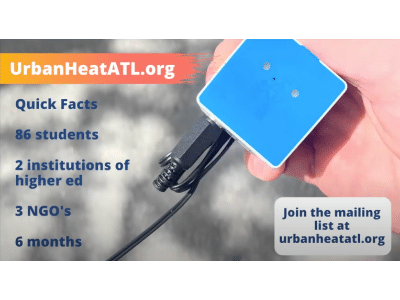First School in Florida to Use PocketLab Air to Monitor Air Pollution
Grade 5 STEM students at Saint Andrew’s School are the newest climate scientists on the block. They caught wind of startling air pollution statistics...
2 min read
Cool Things Being Done With PocketLabs Jun 7, 2023 10:37:40 AM

PocketLab super teacher, Kristi Schertz teaches her students about indoor air pollution using PocketLab Air in this amazing lesson and accompanying video. This engaging activity will help students comprehend the concept of air pollution and raise awareness about the significance of monitoring and addressing indoor air quality issues.
Access the lesson in PocketLab Notebook here:
https://app.thepocketlab.com/lab-report/nMpyRcWP0001ud_Y?ro=1
In today's world, the importance of air quality and its impact on health and the environment cannot be overstated. Educating students about indoor air pollution and its effects is crucial. In this classroom lesson, we will utilize the PocketLab Air device to provide real-time data on air quality parameters.
The PocketLab Air device is a powerful tool that connects to a computer, tablet or phone app, allowing us to monitor air quality factors such as particulate matter, ozone, carbon dioxide, and the Air Quality Index (AQI). It offers accurate PM2.5 levels, as well as data on temperature, barometric pressure, and humidity.
To demonstrate the impact of indoor air pollution, we will conduct a series of experiments involving candles. This lesson includes the following steps:
Ambient (Background) Indoor Air Levels: Before proceeding with the candle experiments, students will record the baseline air quality in the classroom using the PocketLab Air device. This measurement will serve as a reference point for comparison.
Lighting a Match: To establish a baseline for particulate matter levels, we will ignite a match near the PocketLab Air device. Students will observe and record the changes in PM2.5 levels, contributing to their understanding of air pollution sources.
Burning a Regular Candle: In a closed container, we will burn a regular candle made from petroleum-based materials. Students will monitor the changes in PM2.5 and carbon dioxide levels, gaining insights into the pollutants emitted by conventional candles and their impact on indoor air quality.
Burning a Soy Candle: Similarly, a soy candle made from biomass will be burned in a closed container. Students will compare the PM2.5 and carbon dioxide levels emitted by the soy candle with those of the regular candle. This comparison will highlight the benefits of using sustainable materials and their positive influence on indoor air quality.
Blowing Out the Candle: After the candle experiments, students will blow out the candles and monitor the changes in air quality. This step will emphasize the importance of extinguishing pollution sources and its impact on improving indoor air quality.
Throughout the lesson, students will engage in discussions about the different components of candles and their composition. By analyzing the differences between regular and soy candles, students will understand the varying emissions from different sources and their implications for indoor air pollution. Additionally, this activity serves as an introduction to carbon dioxide as a greenhouse gas, fostering connections to climate change topics.
This indoor air pollution lesson aligns with Unit 7 of AP® Environmental Science, allowing students to explore air quality and understand carbon dioxide's role as a greenhouse gas. By incorporating hands-on activities and real-time data analysis, students can enhance their comprehension of these crucial concepts within the field of environmental science.
Educating students about indoor air quality is vital for promoting environmental awareness and empowering them to make a positive impact. Through the use of PocketLab Air devices and interactive activities, this lesson on Notebook offers students a tangible experience to explore and understand indoor air pollution. By linking this lesson to carbon dioxide as a greenhouse gas, students gain a comprehensive understanding of the environmental challenges we face. By continuing to incorporate such lessons into the curriculum, we can inspire the next generation to become advocates for a sustainable and healthier planet.
This Lab Report was submitted by PocketLab Teacher Kristi Schertz. Kristi Schertz is an AP Chemistry Teacher and author of the https://teachingapscience.com/ blog.
You can find the original lesson here:
https://teachingapscience.com/indoor-air-pollution-using-pocketlab-air/

Grade 5 STEM students at Saint Andrew’s School are the newest climate scientists on the block. They caught wind of startling air pollution statistics...

In southern Georgia, AP students in Richard Faucett's environmental science class participated in a citizen science research initiative happening out...

#UrbanHeatATL Get involved: urbanheatatl.org